15 Cheapest Small Towns to Live In
The cheapest small towns might not be for everyone, but their charms can make them the best places to live for plenty of folks.
Charlotte Gorbold
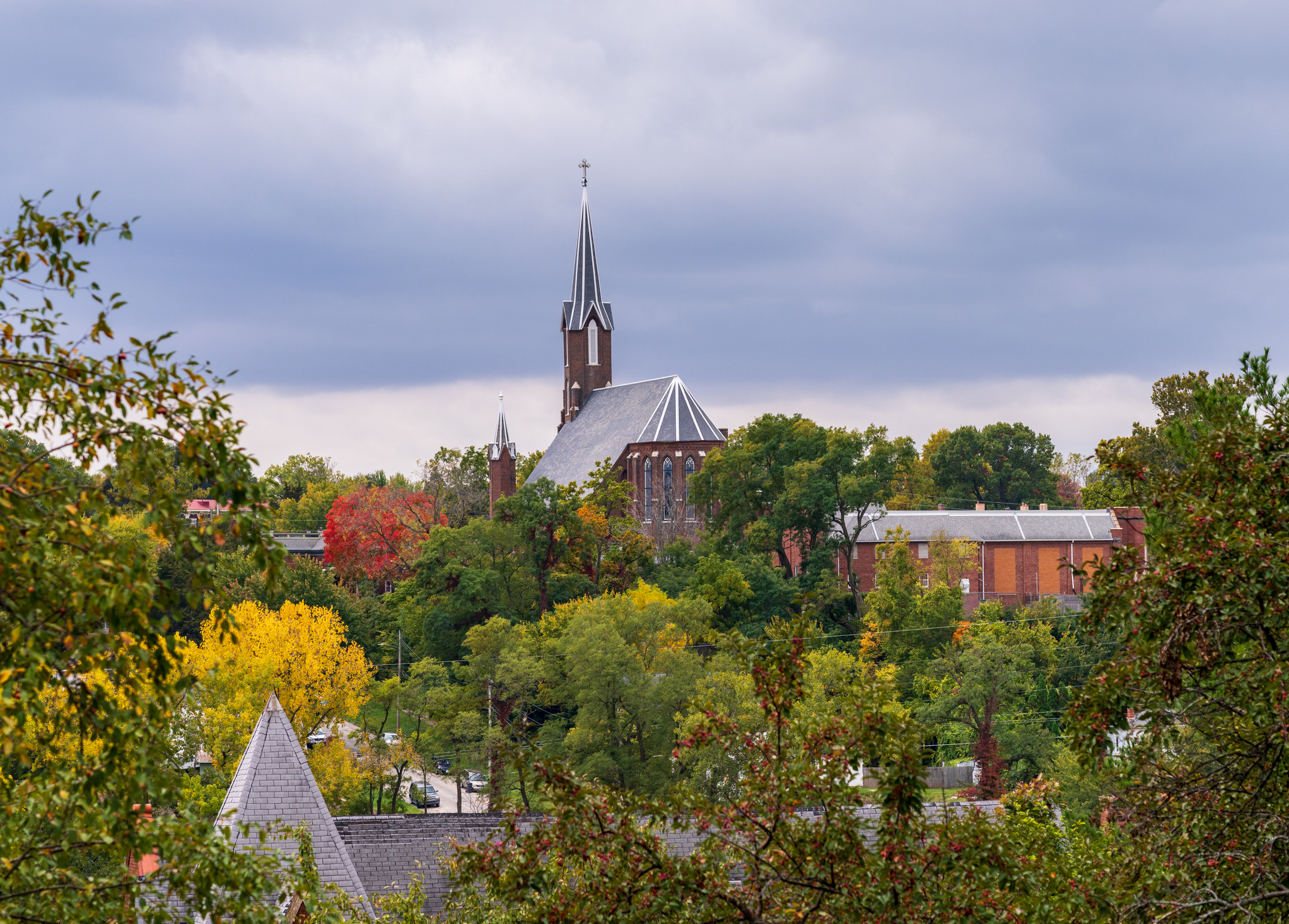
The cheapest small towns to live in might not be for everyone. True, small-town living has plenty of perks: light traffic, a strong sense of community and a slower pace of life.
Perhaps best of all, the cost of living is typically cheaper in small towns than in expensive big cities.
To get a sense of what inexpensive small-town living really costs, we compiled a list of the 10 cheapest small towns to live in America, with small towns defined as places with populations of approximately 10,000 to 50,000 people.
From just $107.88 $24.99 for Kiplinger Personal Finance
Become a smarter, better informed investor. Subscribe from just $107.88 $24.99, plus get up to 4 Special Issues

Sign up for Kiplinger’s Free Newsletters
Profit and prosper with the best of expert advice on investing, taxes, retirement, personal finance and more - straight to your e-mail.
Profit and prosper with the best of expert advice - straight to your e-mail.
We compiled our rankings based on the Council for Community and Economic Research's (C2ER) calculations of living expenses in 265 urban areas.
C2ER's Cost of Living Index measures prices for housing, groceries, utilities, transportation, health care, and miscellaneous goods and services, such as going to a movie or getting your hair done at a salon.
The data, which sorts through thousands of prices in hundreds of cities, allowed us to pinpoint the small towns with the absolute lowest living costs. (For larger urban areas, read our list of the 15 Cheapest Places to Live: U.S. Cities Edition).
You should weigh the pros and cons before you pack up and relocate to one of the 15 cheapest small towns in America. While a low cost of living is attractive, it can be offset by issues such as scarce jobs, small paychecks or a lack of things to do in the area.
Plan an extended visit to ensure the small town fits your lifestyle. In a tight real estate market, consider all your options, even buying a foreclosed home.
Here are the 15 cheapest small towns to live in the U.S.
Source: C2ER's Cost of Living Index, 2025 Annual Average Data, published August 2025. Index data is based on average prices of goods and services collected during the second quarter of 2025, with index values based on the new weights for 2024. Population data, household incomes, home values, poverty rates and other demographic information are from the U.S. Census Bureau. Local unemployment rates, courtesy of YCharts, are not seasonally adjusted and are as of December 5, 2025, for the month of August 2025, which is the latest available final data.
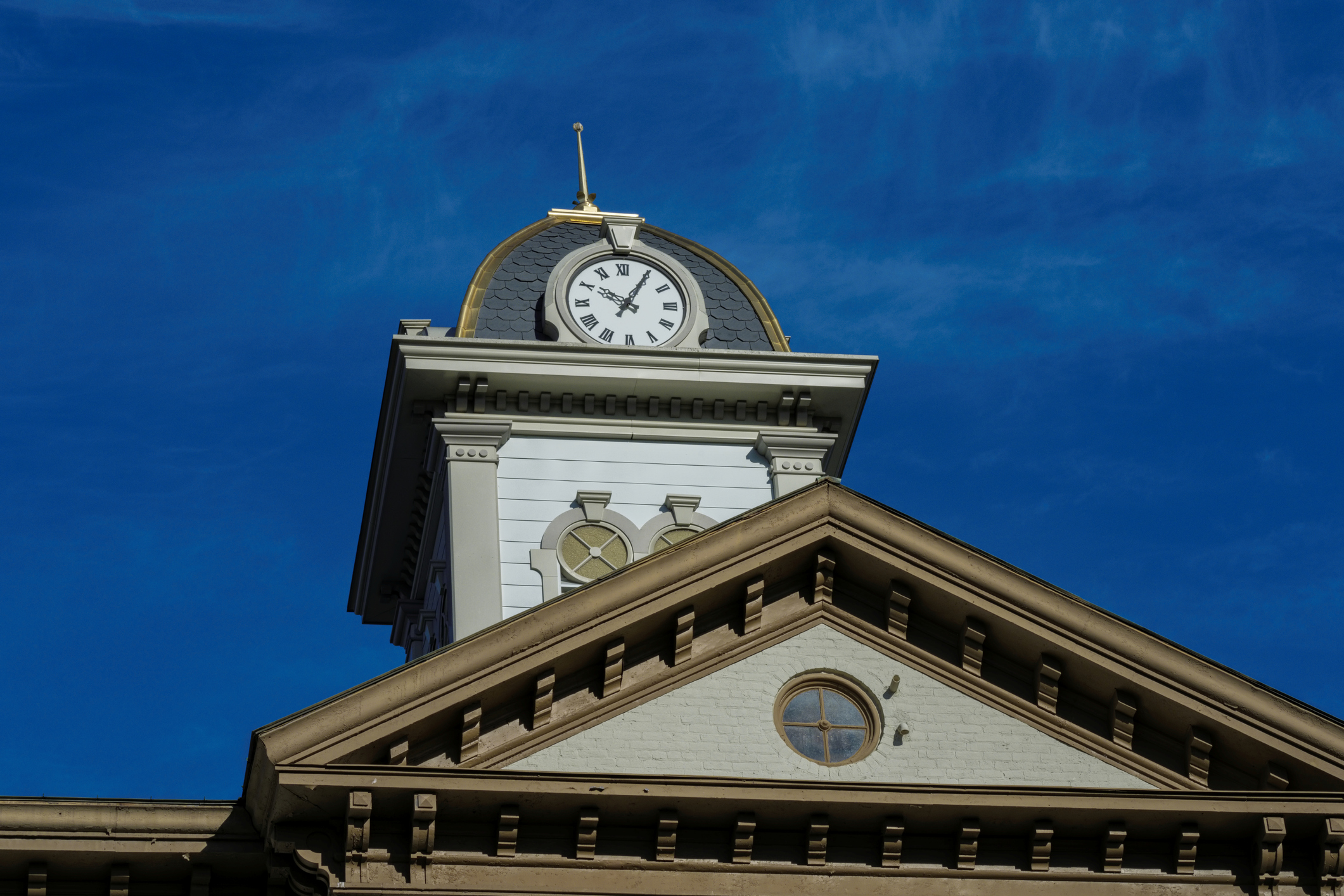
15. Morristown, Tennessee
- Cost of living: 11.8% below U.S. average
- Population: 30,983
- Median household income: $44,811 (U.S. average: $81,604)
- Median home price: $423,537 (U.S. average: $540,508)
- Unemployment rate: 3.6% (U.S.: 4.4%)
Morristown is a city in and the county seat of Hamblen County, and is centrally located between eight counties. This location allows Morristown to be the regional hub for employment, shopping, recreation, healthcare and educational opportunities in the area. The city lies within the Ridge and Valley of the Appalachians and is considered part of a region known as the "Lakeway Area," consisting of a land area surrounding Cherokee and Douglas lakes.
The Cherokee’s 400 miles of shoreline is dotted with a variety of public access areas, county and municipal parks, commercial boat docks, Panther Creek State Park, and a state wildlife management area. And, with a temperate climate, anglers can enjoy fishing nearly every day of the year. So, grab your rod, boat, kayak or canoe and set sail for a fun day on the water at Cherokee Lake. With over 400 miles of shoreline, beautiful Cherokee Lake is a fisherman’s haven.
Tennessee is one of the few states to earn a spot on Kiplinger’s 10 Most Tax-Friendly States for Retirees and Best States for Middle-Class Families Who Hate Paying Taxes. It may be no surprise that the cost of living in Morristown is easy on your pockets. Housing and transportation costs are well below average, coming in at 23.1% and 16.2% less than the mean.
There is plenty of free entertainment in the summer. The Downtown Green, located in Morristown’s historic district, is the home of a monthly summer concert series as well as the popular Morristown Craft Beer Festival, held on the fourth Saturday in September. And if you prefer to indulge in some wine, you’ll pay 9% above average for the vino.
Another plus: the city boasts four championship disc golf courses, making it the premier destination in Tennessee for competitors of all skill levels.
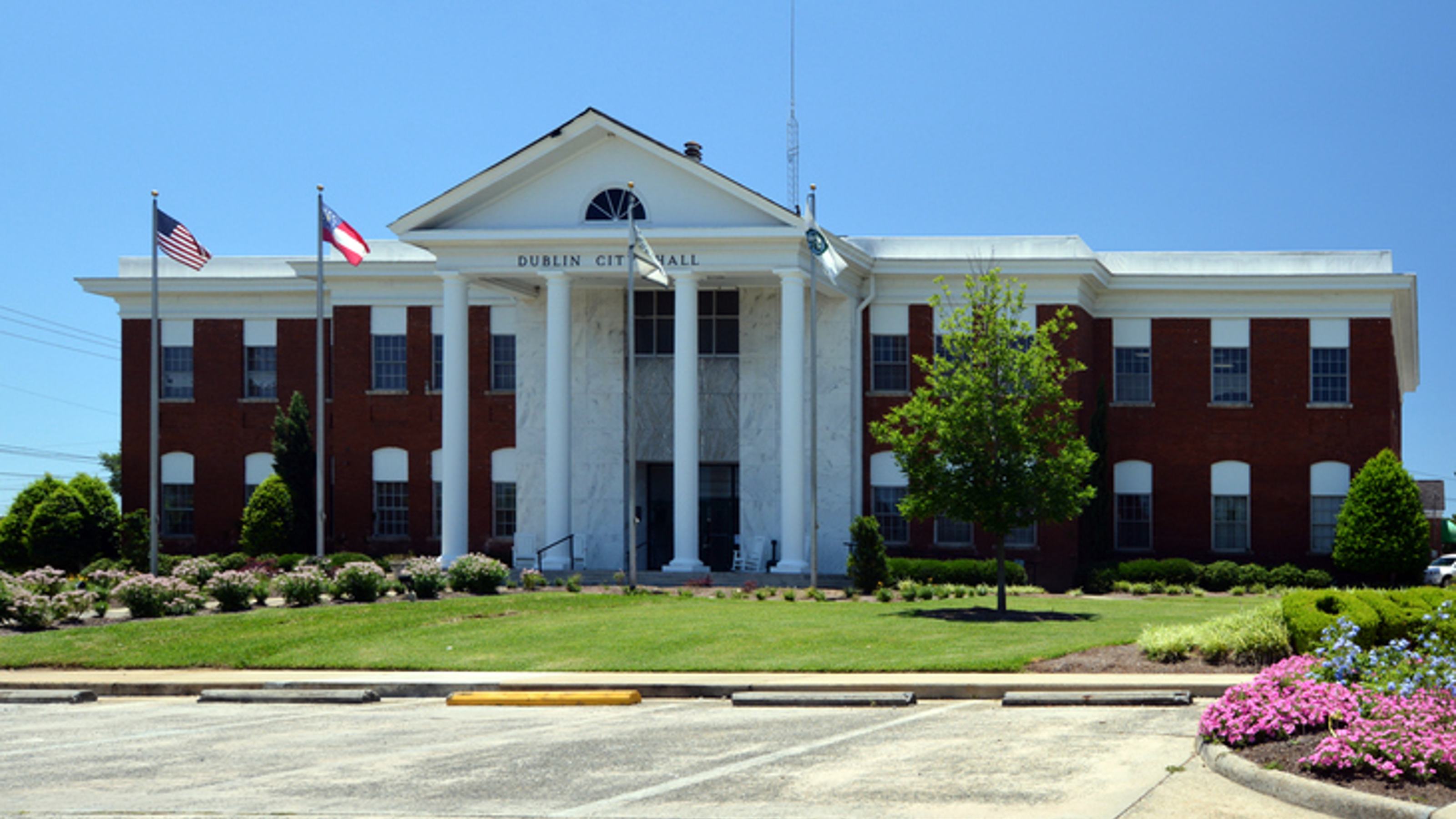
14. Dublin, Georgia
- Cost of living: 12.8% below U.S. average
- Population: 16,023
- Median household income: $40,417
- Median home price: $371,433
- Unemployment rate: 4.1%
Tiny Dublin, Georgia, punches well above its population-size weight. This town, situated about halfway between Atlanta and Savannah, hosts three institutions of higher education (Georgia Military College, Oconee Fall Line Technical College and Middle Georgia State University all have campuses there), a Veterans Administration Medical Center, and two nationally recognized historic districts.
Whether residents buy or rent, expenses related to keeping a roof over one's head are 25.5% lower than the U.S. average. The average price of a house in Dublin stands at $371,433, per C2ER, as opposed to $540,508 nationally. That represents a savings of 31.3%. Rents, meanwhile, are cheaper by 13.8%.
And in a special break for Dublin's senior citizens, Georgia happens to be one of the more tax-friendly states for retirees. Although pensions and 401(k), and IRA distributions are partially taxable, taxpayers age 62 and older may exclude up to $35,000 of their retirement income; that exclusion goes up to $65,000 for those aged 65 and older.
Sadly, too many of Dublin's residents struggle despite its low cost of living. The town's poverty rate is 35.1% and that's more than double the Georgia state poverty rate of 13.5%.
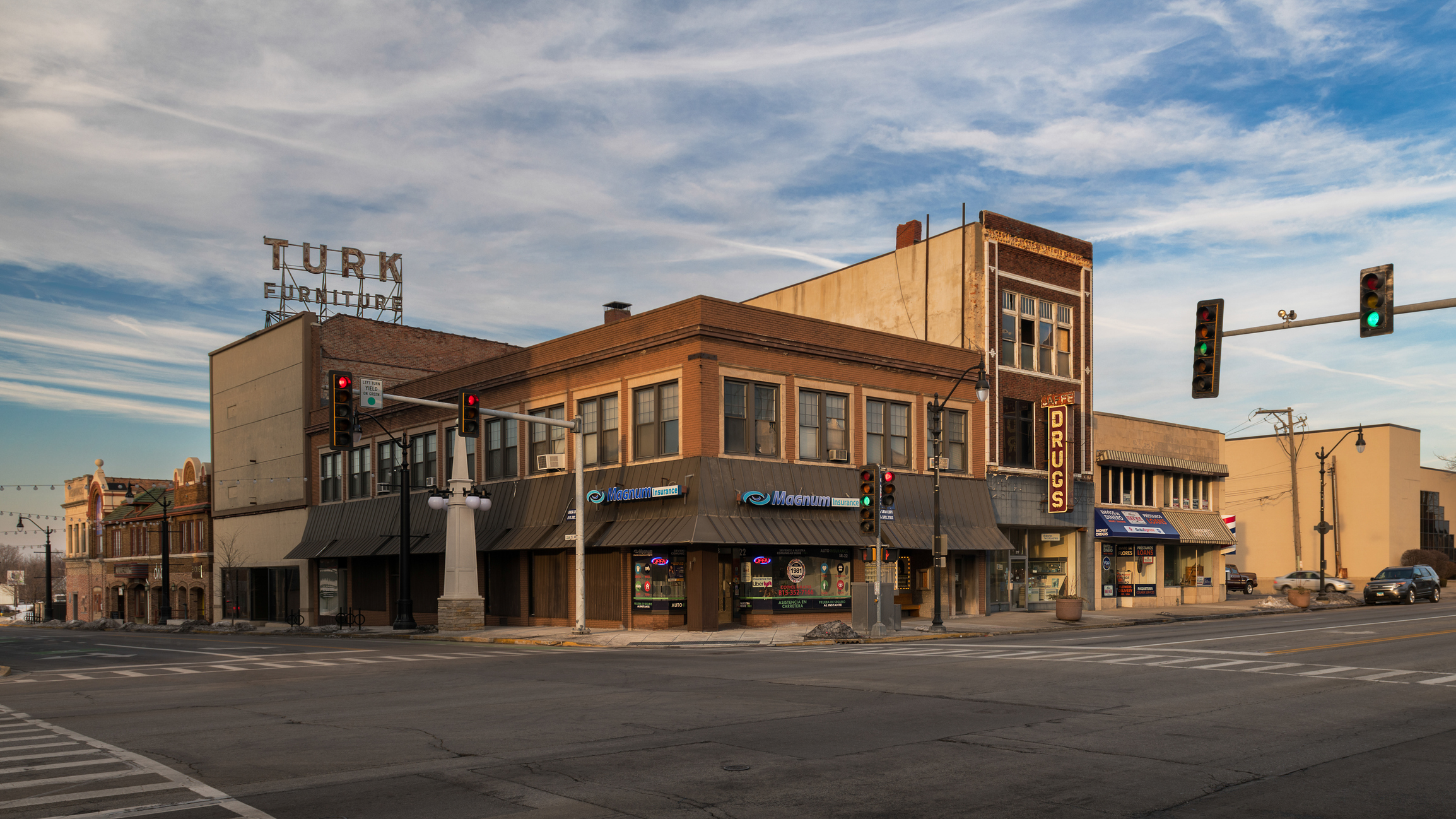
13. Kankakee Illinois
- Cost of living: 12.3% below U.S. average
- Population: 24,384
- Median household income: $45,119
- Median home price: $319,467
- Unemployment rate: 5.7%
Kankakee is the county seat of Kankakee County and serves as an anchor city in the rural plains outside Chicago. The Kankakee River, which runs through the city, is approximately 133 miles long and serves as a major attraction and defining landmark. The river water is refined at the Kankakee Water Company, and electricity is generated at the Kankakee River Dam, providing vital resources to the community.
Major employers encompass a diverse set of industries. Midwest Transit Equipment is the largest bus dealer in the United States. It was founded in 1976 and has only 100 employees and an annual revenue of $300 million.
Small Newspaper Group publishes newspapers in the Midwest and employs about 100 people in the area. Serological Proteins is a medium-sized health care company with 651 employees and a revenue of $350 million.
The cost of living in Kankakee offers some relief from the difficult employment environment. Housing and utilities are, on average, 34.6% and 8.4% below average, respectively.
However, Illinois has earned a place on our list of the 10 Least Tax-Friendly States for Middle-Class Families. There is some good news for retirees, as this is one of 13 states that don’t tax retirement income.
The city has two softball complexes that have both been inducted into the Softball Hall of Fame. They host annual state and international tournaments, drawing nearly 50,000 spectators throughout the year. Some Kankakee youth baseball leagues have won state championships.
It's also home to two important Frank Lloyd Wright houses: the B. Harley Bradley and Warren R. Hickox houses. These two homes were the first of their kind and mark the beginning of Wright's "Prairie Style" period. For the next decade, his architectural commissions reportedly drew on the basic plans of these two houses.
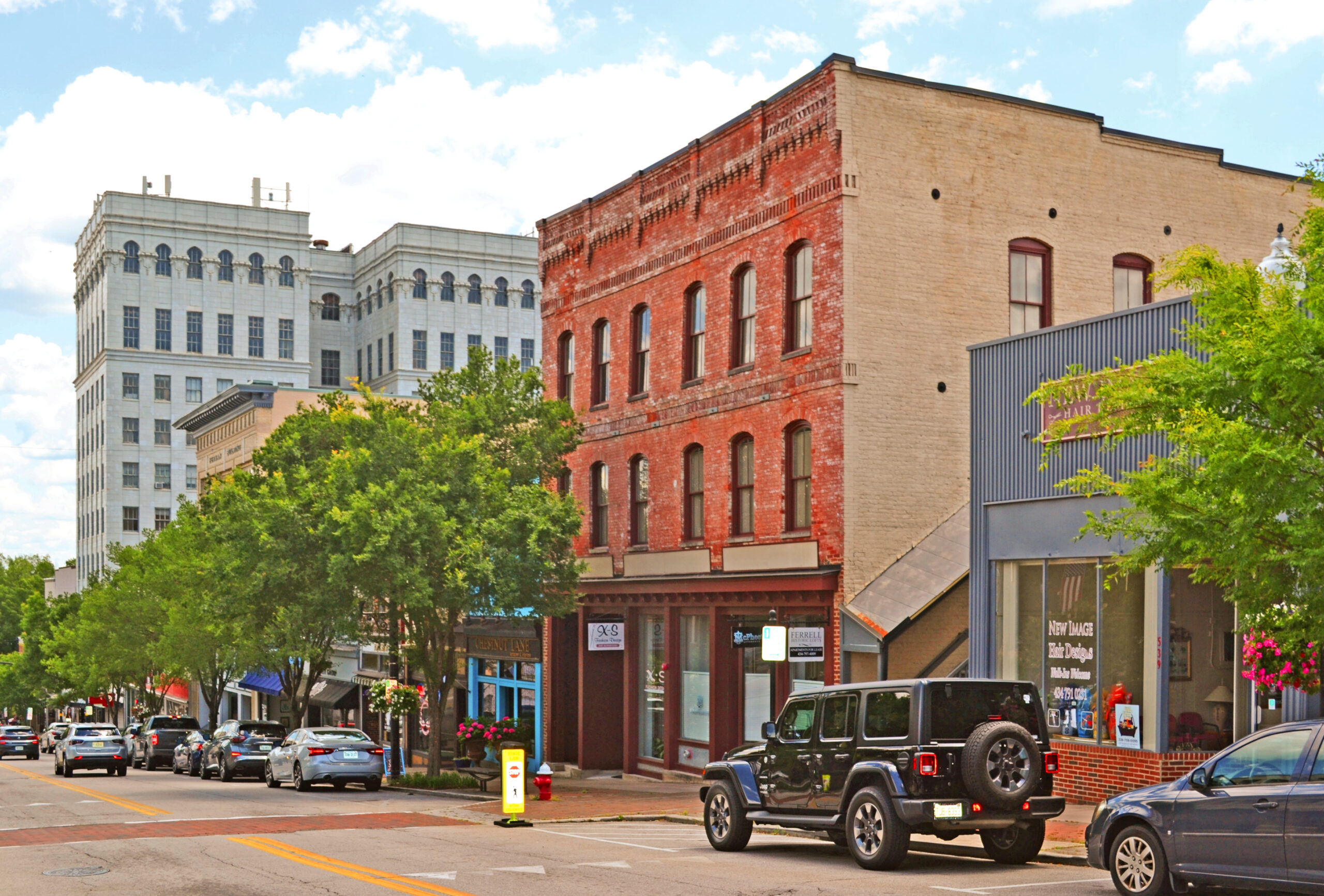
12. Danville City, Virginia
- Cost of living: 12.8% below U.S. average
- Population: 42,239
- Median household income: $42,778
- Median home price: $397,500
- Unemployment rate: 6.6%
Just 20 years ago, Danville City, Virginia, was in the throes of an economic crisis. The tobacco and textile industries on which it relied had collapsed, and the town’s key employer, Dan River Mills, had shuttered its huge operation, leaving thousands out of work and a local landmark derelict.
Fast forward to the present day, and it’s a different story. A concerted effort to regenerate the town and preserve its heritage i succeeding, evidenced by a recent influx of new residents that goes against the rest of the region's trend of outward migration.
The Caesars casino, which opened in 2024, and the Danville Science Center have boosted the local economy, creating new jobs and drawing in visitors to the area. Even the iconic Dan River Mills building is being restored and will soon offer residents a mix of housing, office and retail spaces, as well as a new riverfront park.
Housing costs in Danville City are 24.4% below the national average. The average renter pays $1,288, $366 less than the national average of $1,624. The average mortgage payment of $1,915 is $675 lower than the typical payment around the country of $2,590.
Unfortunately, for retirees, Virginia pension income and distributions from IRAs and 401(k)s are taxable. However, Social Security benefits are tax-exempt. Gas is more expensive as gas taxes increased to 30.8 cents per gallon from 29.8 cents as of July 1.
As you might expect in a riverside town, outdoor pursuits feature heavily on the list of things to do. The River Dan, flowing 214 miles in Virginia and North Carolina, supports fishing, paddle boarding, kayaking and wild swimming. But those who prefer dry land will find plenty of walking and mountain biking trails to explore, plus a local vineyard and a beer trail, as well as plenty of places to stop and refuel in the town itself.

11. Wilkes-Barre, Pennsylvania
- Cost of living: 12.9% below U.S. average
- Population: 44,217
- Median household income: $47,970
- Median home price: $273,323
- Unemployment rate: 5.4%
Wilkes-Barre is a hidden gem in northeastern Pennsylvania. Around two hours from New York and Philadelphia, the town sits on the banks of the Susquehanna River, in the heart of the Wyoming Valley. If you’re looking for a cheap place to live with plenty of access to outdoor activities, this might be the ideal spot.
The town boasts three riverfront parks: Nesbitt Park, the River Common, which hosts Rockin’ the River, a series of free concerts every summer, and Kirby Park, which has softball playing fields, tennis and volleyball courts, and a running track. Baseball fans take note: Babe Ruth hit the longest home run in baseball history on October 12, 1926, during an exhibition game in Wilkes-Barre. He blasted the ball some 650 feet into Kirby Park; a kiosk marks the spot where it landed.
Kirby Park is a starting point for the Luzerne County Levee Trail — a 12-mile stretch that’s perfect for walking and cycling. Keen walkers might also enjoy the town’s Walkitecture tour, which takes you around historic landmarks, including the Market Street Bridge, designed by the firm that built the New York Public Library.
Housing in Wilkes-Barre is a comparative bargain, as the average home price of $273,323 is a whopping $267,185 (49%) less than the national average of $540,508. A number of other costs run above average. Utilities (+2.8%), transportation (+5.8%), and health care (+2.3%) will cost you more than most other communities. Groceries offer a small savings, coming in at 3% below average.
Downtown, you’ll find coffee shops, restaurants and community events in the Public Square (known as ‘the Square’), as well as a Farmers’ Market from summer through fall. The town has a growing network of independent shops and small businesses, while local employment relies heavily on transportation, utilities, education and health care.
Pennsylvania has a flat state income tax rate of 3.07%; however, municipalities and school districts can also impose taxes on wages or income. The average effective property tax rate is 1.41%, which is higher than in most other states. Pennsylvania's inheritance tax ranges from 0% to 15% depending on the age of the decedent and the relationship of the party that inherits.
Retirees are in luck, as Pennsylvania doesn’t tax any traditional types of retirement income. That means your Social Security benefits, pension income and 401(k)/IRA distributions are tax-free.

10. Burlington, Iowa
- Cost of living: 13.4% below U.S. average
- Population: 23,800
- Median household income: $55,274
- Median home price: $362,625
- Unemployment rate: 6.0%
The American Fur Company of John Jacob Astor established a post in the area in 1829. Burlington was once a bustling river port in the steamboat era and a central city to the Chicago, Burlington and Quincy Railroad. The Port of Burlington is now a rental facility on the Mississippi River just south of the Great River Bridge. Its population peaked in 1970.
Burlington's roots are in transportation and manufacturing, and saw many of the manufacturing jobs relocate in the 1970s and 80s. Manufacturing plants are still among the largest employers in the area, including companies such as American Ordnance LLC, Case Corporation, ABB (formerly General Electric), and Champion Spark Plugs. The average income and home values reflect the economic difficulties in Burlington. Income is $26,330 below average, and home prices are over $175k lower than the national average.
Ripley's Believe It or Not has designated Snake Alley as "Unbelievably Crooked" and the #1 Odd Spot in Ripley's Guide to the Curious Corners of America. What might be Burlington's most famous landmark, Snake Alley, consists of five half-curves and two quarter-curves and is reminiscent of vineyard paths in France and Germany. It reminds me of Lombard Street in San Francisco. It plays host to an annual uphill bike race and art fair.
Residents of Burlington pay slightly below average for utilities (7.7%) and transportation (.8%) despite having an overall cost of living 13.4% below average. And, grocery bills are about 6.3% lower.
Iowa's tax rates are generally favorable. Iowa no longer taxes retirement income for taxpayers 55 or older. And in another tax-friendly move, Iowa's inheritance tax ranges from 2% to 6% and has been completely repealed for all decedents dying on or after January 1, 2025.

9. Cookeville, Tennessee
- Cost of living: 14.2% below U.S. average
- Population: 35,544
- Median household income: $48,501
- Median home price: $391,695
- Unemployment rate: 4.0%
Cookeville, TN, packs a surprisingly big punch for its size (population just under 35,000, according to the 2020 United States Census). Home to Tennessee Tech University, it’s a college town with a thriving arts, food and music scene, just over an hour east of Nashville.
Residents are justifiably proud of the town and its heritage, including the courthouse, which stands in pride of place in the historic west side district and took no fewer than four attempts to build (attempts one to three were successively built and burned down in the 1800s). It now sits among art galleries and studios, shops, restaurants and bars, and close to the train depot museum.
The overall cost of living in Cookeville is 14.2% below the national average, with housing and health care offering the biggest savings at 28.2% and 29% lower, respectively, than what most Americans pay. Grocery prices (4.6%) and miscellaneous goods and services (5.1%) offer the least savings.
The nearby Performing Arts Center is the town’s main destination for concerts and theater performances, while Dogwood Park holds outdoor Shakespeare plays in early fall. The town’s strong community spirit is at the heart of successful annual events such as the Firefly music festival, Fall Fun Fest, and Cooking on the Square — a Cajun feast held to raise funds to build homes for families in need.
Manufacturing is a major part of the local economy. Oreck Corporation has its principal manufacturing facilities in Cookeville, as does ATC Automation, which makes industrial machinery. Transportation and supply chain management company Averitt also has its corporate headquarters in the town. But you don’t have to travel too far to escape all things industrial — Cookeville is within an hour of 10 state parks, including popular beauty spot Cummins Falls.
Tennessee comes in as the second most tax-friendly state to live out your retirement. It also has no estate and inheritance taxes. The Volunteer State also earned a spot on Kiplinger's list of States With the Lowest Property Taxes.
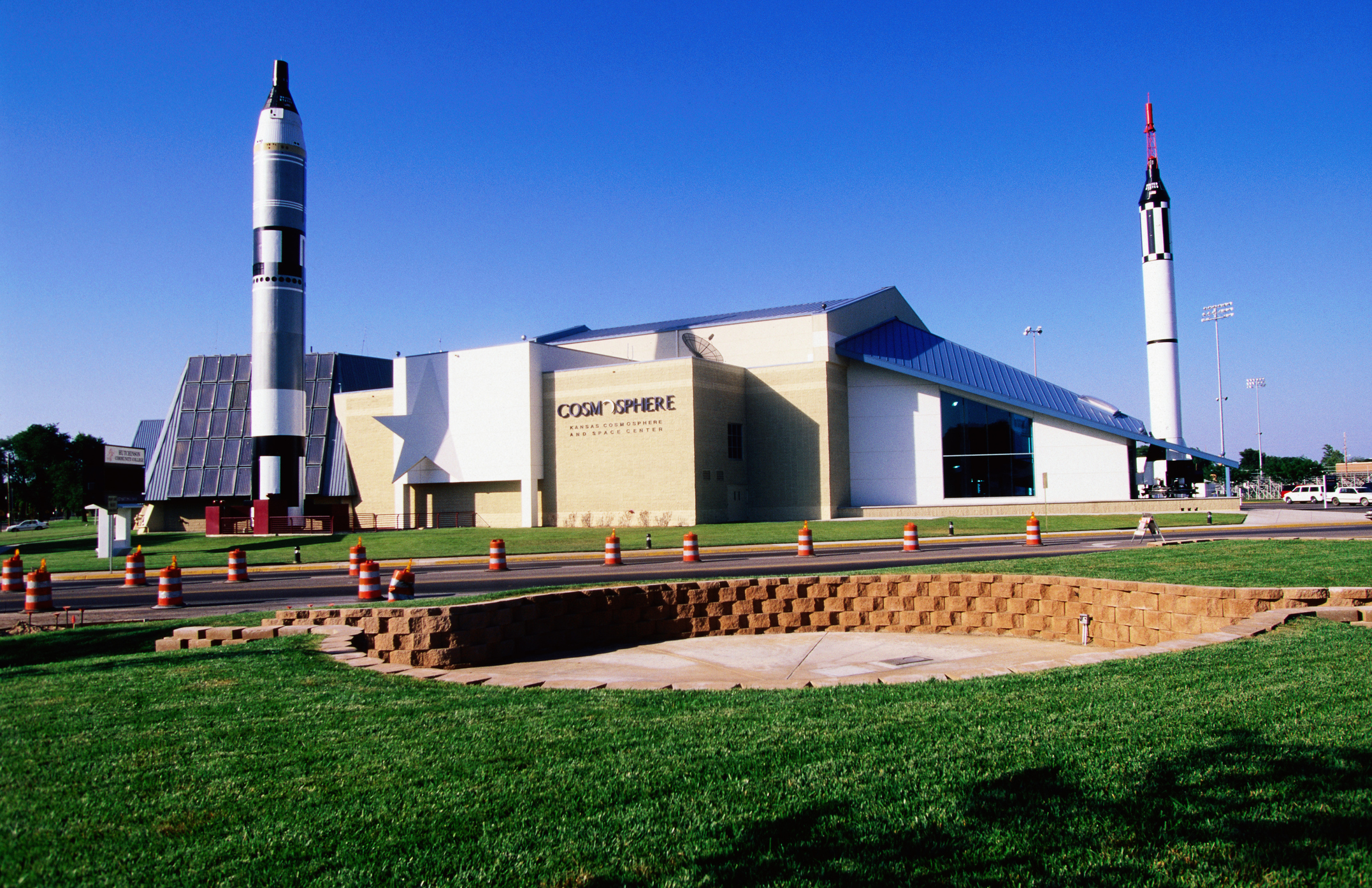
8. Hutchinson, Kansas
- Cost of living: 14.8% below U.S. average
- Population: 39,837
- Median household income: $58,801
- Median home price: $409,367
- Unemployment rate: 4.7%
When you’re deicing your driveway with salt, you’re probably not asking yourself where it was mined, but the answer might surprise you. In the U.S., there’s a chance it comes from the Midwest — Hutchinson, Kansas, to be precise.
This unassuming town, with a little more than 40,000 residents, dates back to 1871, when frontiersman Clinton “C.C.” Hutchinson established a town at the Santa Fe railroad’s crossing over the Arkansas River.
But it was Ben Blanchard, a land speculator, who hit the jackpot a few years later. When drilling for oil, Blanchard discovered the area’s rich salt deposits. Known as “white gold,” the mineral was vital for food preservation in the days before refrigeration. Salt mining became a major industry in the town and is still going strong, owing to its importance for agriculture and snow removal.
Ironically, Hutchinson doesn't get much snow. The snowy period of the year lasts from November to March, with its peak in December, with an average snowfall of 2.9 inches.
The business’s success reflects the bigger picture in Kansas, which remains slightly above the national average in terms of the proportion of employees in manufacturing. Other large employers in the Hutchinson area include Siemens (wind turbine components), Kuhn Krause (agricultural machinery and parts), Sonoco (packaging) and Morton Salt.
In this urban-rural community, life can be as quiet or as busy as you want to make it. Outdoor types will enjoy the surrounding scenery, bike and hiking trails and protected open spaces, including Dillon Nature Center. Hutchinson is home to the world-renowned Prairie Dunes Country Club and golf course (founded in the 1930s by a salt tycoon, Emerson Carey and his sons). Families will also enjoy the annual Kansas State Fair, the Cosmosphere space museum and the Strataca underground salt museum.
Buying a home in Hutchinson is a bargain, with prices at 30.9% below the national average, but it comes with a "relatively high" risk of experiencing tornadoes, according to FEMA. Grocery and utility expenses aren't as much of a bargain, offering a savings of 4% and 4.1%, respectively. Health care expenses are only 3.1% lower than the national average.
Downtown is a hub for community events, shopping, dining, and entertainment. Public investment has redeveloped the area, and further improvements will include public green spaces, a river walk, an amphitheater and a water spray park. Uptown, you’ll find more shopping and the beautifully renovated B&B Theaters.
If you feel the need for the bright lights of a big city, you’re an hour’s drive from Wichita and around three hours from Kansas City.
Kansas recently enacted a number of tax cuts, including a repeal of its tax on Social Security benefits. However, it continues to tax income from private retirement plans, IRAs and 401(k)s. Retirees can plan on passing on more of their wealth because there is no estate tax or inheritance tax in Kansas.
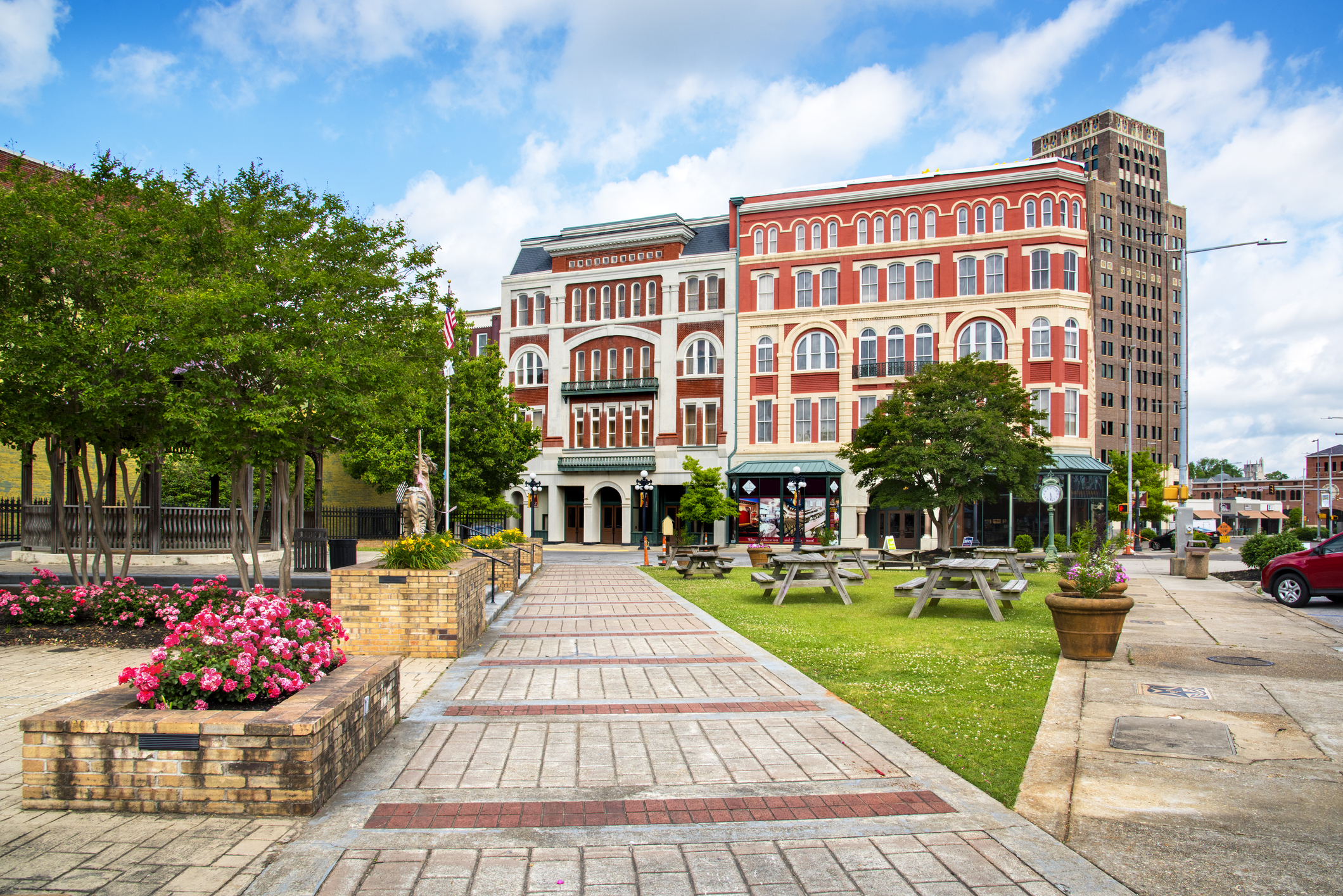
7. Meridian, Mississippi
- Cost of living: 16.7% below U.S. average
- Population: 34,466
- Median household income: $34,657
- Median home price: $325,589
- Unemployment rate: 4.5%
Meridian was rebuilt from 1890 to 1930 after being almost totally destroyed in the Civil War. As a result, it has not one but nine registered historic districts. The Highland Park Dentzel Carousel, dating to 1909, is one of the more whimsical ones.
Meridian's other claim to fame is as the birthplace of Jimmie Rodgers, known as the "Father of Country Music." Music remains a centerpiece of Meridian's cultural scene.
Today, the federal government plays an important role in its economic life, as Naval Air Station Meridian and Key Field are two of the largest employers.
Happily, the men and women in uniform — as well as all of Meridian's civilian citizens — catch a break on living costs, which stand 13.1% below the U.S. average. But what pushes Meridian onto the list of America's absolute cheapest small towns is its comparatively modest housing costs, which are 38.4% lower than what the average American pays.
Meridian's older residents also benefit from the fact that Mississippi is one of the more tax-friendly states for retirees.
Sadly, as with several of the small towns on this list, Meridian's low cost of living comes at a high price. Its poverty rate of 31.9% is considerably higher than Mississippi's rate of 19.1%.
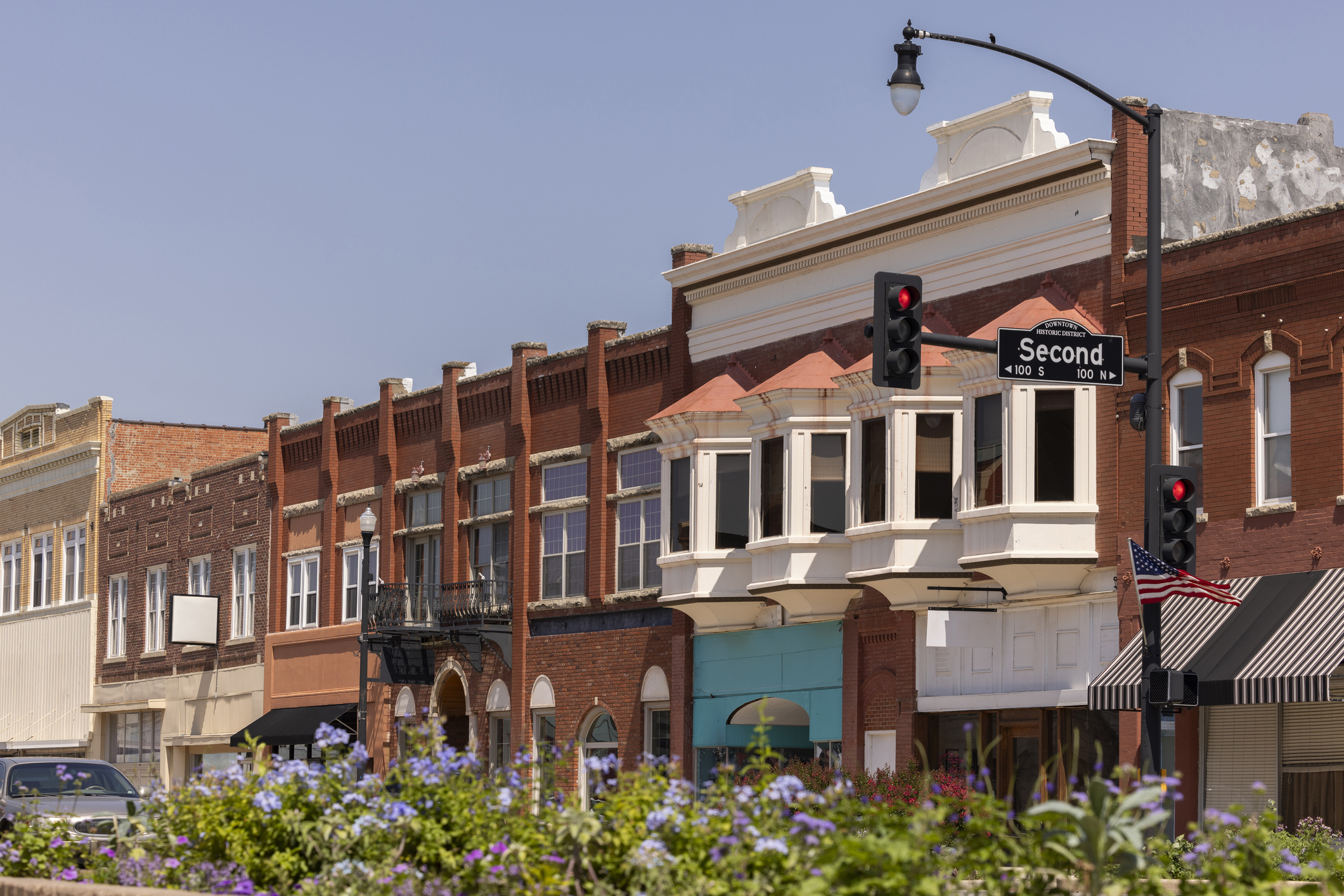
6. Ponca City, Oklahoma
- Cost of living: 17.2% below U.S. average
- Population: 24,377
- Median household income: $55,270
- Median home price: $373,500
- Unemployment rate: 3.7%
Ponca City traces its lineage to the days of the Land Run of 1893, when pioneers decided to build a town in north-central Oklahoma near the Arkansas River and a freshwater spring.
Not long after its founding, enterprising oilmen successfully drilled wells in the area, and Ponca City remains an oil town to this day. Some of the area's largest employers include energy firms such as Schlumberger (SLB), ConocoPhillips (COP) and Phillips 66 (PSX).
Local attractions include the Marland Mansion, which was built by oil baron E.W. Marland in the early 20th century. It's now a museum. Dedicated in 1930, the Pioneer Woman Statute, a 30-foot-tall monument of a pioneer woman holding a young child, is also not to be missed.
Household incomes are well below the national median, but housing is a heck of a deal. The median price of a Ponca City home is just $373,500. Nationally, it's $540,408. Total housing costs are almost 30% less than what the average American pays, according to C2ER's Cost of Living Index.
Residents also catch a break on all manner of miscellaneous goods and services, which are 16.2% lower than the national average. The health care discount is 9.1% and groceries are a smidge cheaper at 4.7% below the national average.
Although it's among the cheapest small towns in America, Ponca City's low cost of living does come at a cost: The town sits pretty much in the middle of Tornado Alley.
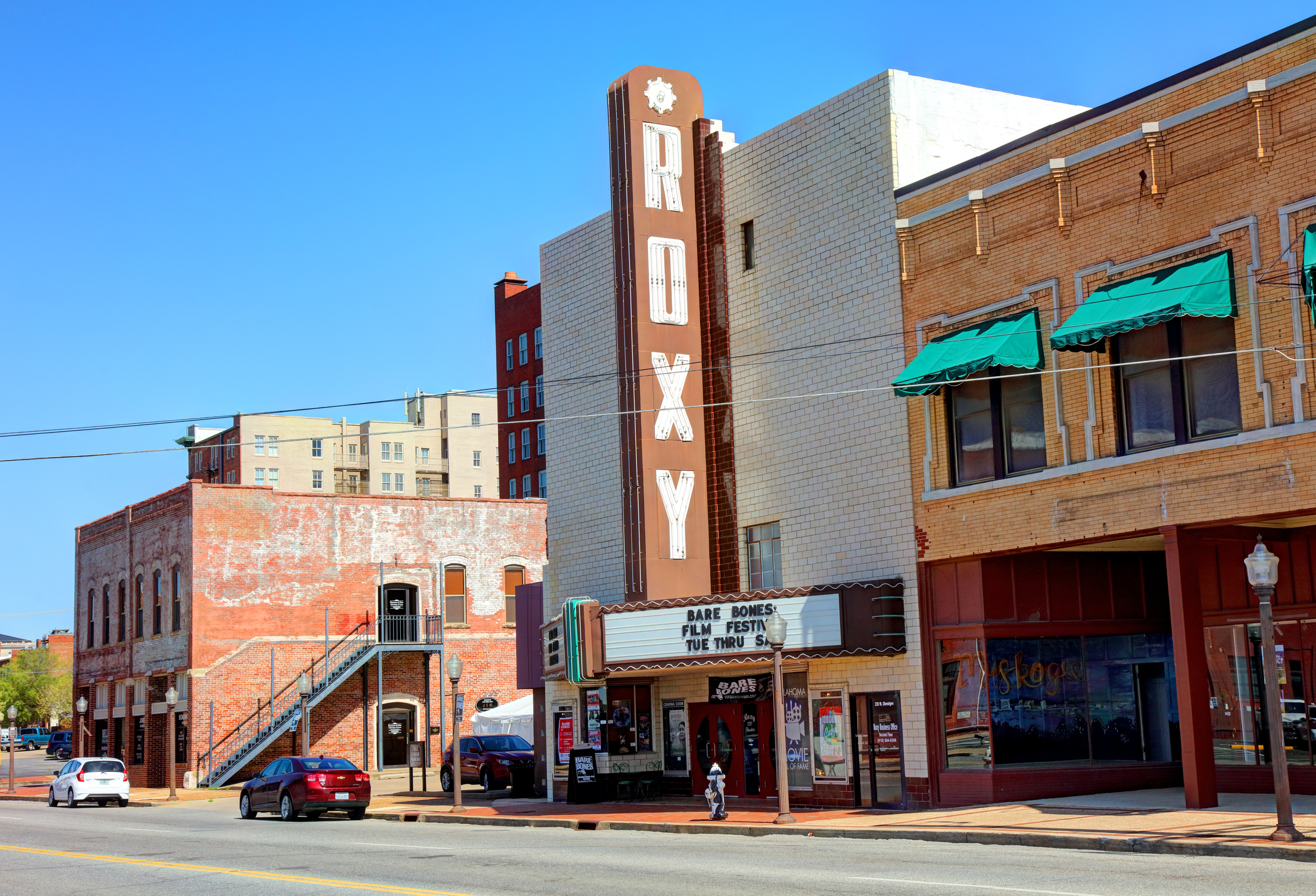
5. Muskogee, Oklahoma
- Cost of living: 17.5% below U.S. average
- Population: 36,819
- Median household income: $48,735
- Median home price: $373,500
- Unemployment rate: 4.8%
Muskogee packs a lot of history, culture and higher education into a pint-sized package.
Located about 50 miles southeast of Tulsa, the town traces its roots to 1817. It's home to four institutions of higher learning, as well as the Oklahoma School for the Blind.
Jim Thorpe – All-American, the 1951 film starring Burt Lancaster, was shot on the campus of what was then known as the Bacone Indian University in Muskogee. The town also boasts six museums and the Oklahoma Music Hall of Fame.
Let's not forget what is arguably the town's most famous appearance in popular culture: Merle Haggard's hit song "Okie from Muskogee," which became an emblem of Vietnam-era America.
Today, the area's employers include the U.S. Department of Veterans Affairs, a VA medical center and paper company Georgia-Pacific.
What really puts Muskogee on the map is its ultra-low cost of living. The biggest break comes from housing-related expenses, which are 33.4% lower than the national average, according to C2ER's Cost of Living Index. Health care is cheaper, too. Costs are almost 11.1% lower than what most Americans pay.
Retirees will be happy to know that Social Security benefits, military pensions and Railroad Retirement benefits are not taxed at the state level. However, pension income and distributions from 401(k)s and IRAs are partially taxable.
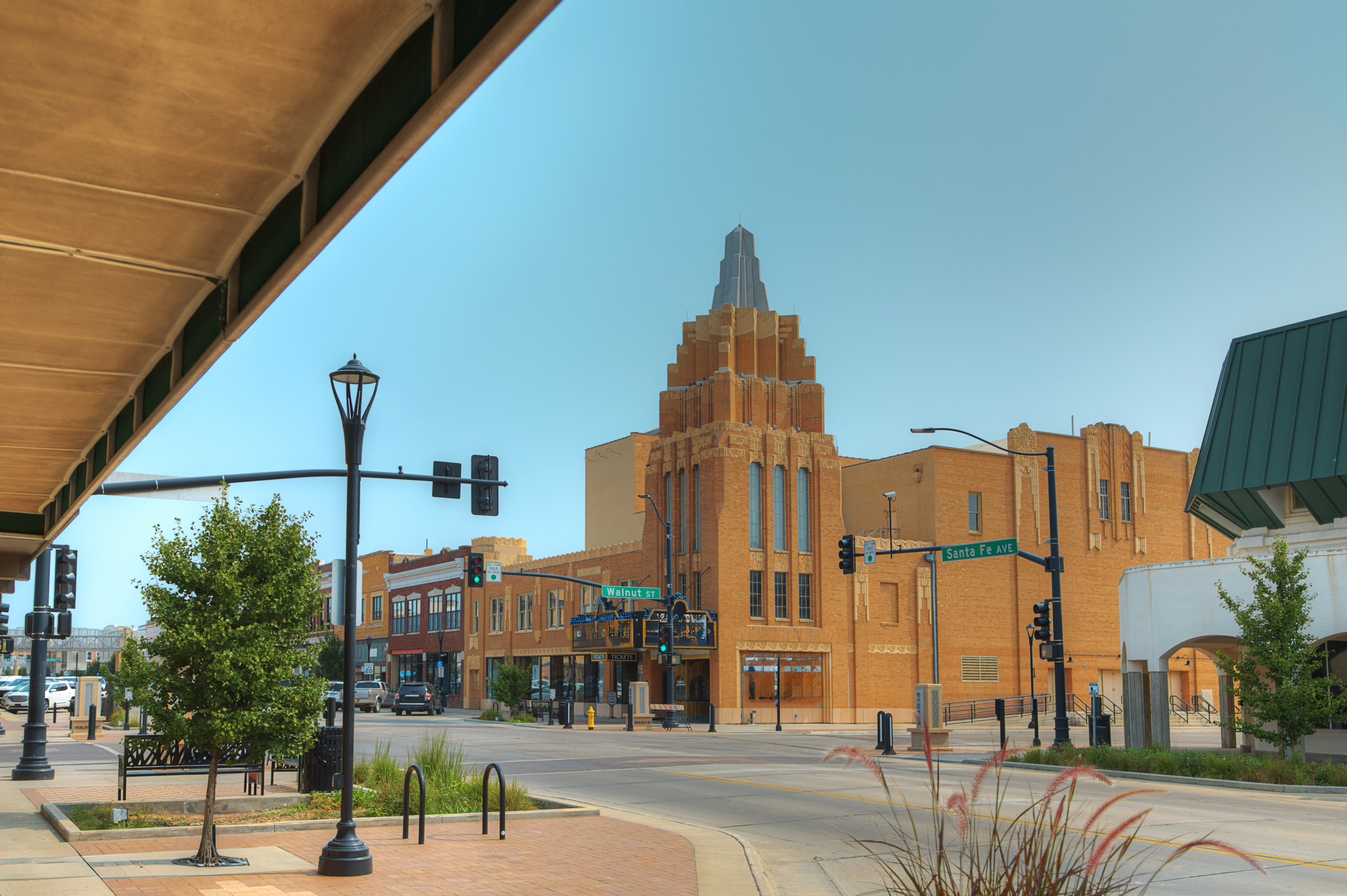
4. Salina, Kansas
- Cost of living: 18.1% below U.S. average
- Population: 46,432
- Median household income: $60,624
- Median home price: $355,200
- Unemployment rate: 3.9%
The small town of Salina sits at the intersection of Interstates 70 and 135, about 90 miles north of Wichita and 175 miles west of Kansas City.
Manufacturing and health care are among the town's most important industries. Major employers include Schwan's Company, the maker of Tony's frozen pizza; Great Plains Manufacturing, which serves the agricultural industry; and the Salina Regional Health Center.
Salina is also home to several institutions of higher education, including the University of Kansas School of Medicine Salina Campus and Kansas State University Polytechnic Campus.
Salina's economic mix has proven adept at delivering both low unemployment and low living costs. Housing expenses come in at roughly two-thirds of the national average, according to C2ER. Transportation is cheaper, too, running about 11.3% less than the national average.
Locals catch breaks in lots of other ways, too. Groceries and miscellaneous goods, and services all cost less than the national averages. Utilities are the outlier and is 2.5% above the national average.
On the other hand, taxes are somewhat burdensome statewide. Kiplinger's Kansas State Tax Guide rates Kansas as one of the least tax-friendly states for middle-class families, largely because of a high sales tax. Although, Kansas is no longer one of the state states that taxes Social Security benefits, many types of retirement income are subject to income taxes. Distributions and income from private pensions IRAs and 401(k)s will be taxed as income.
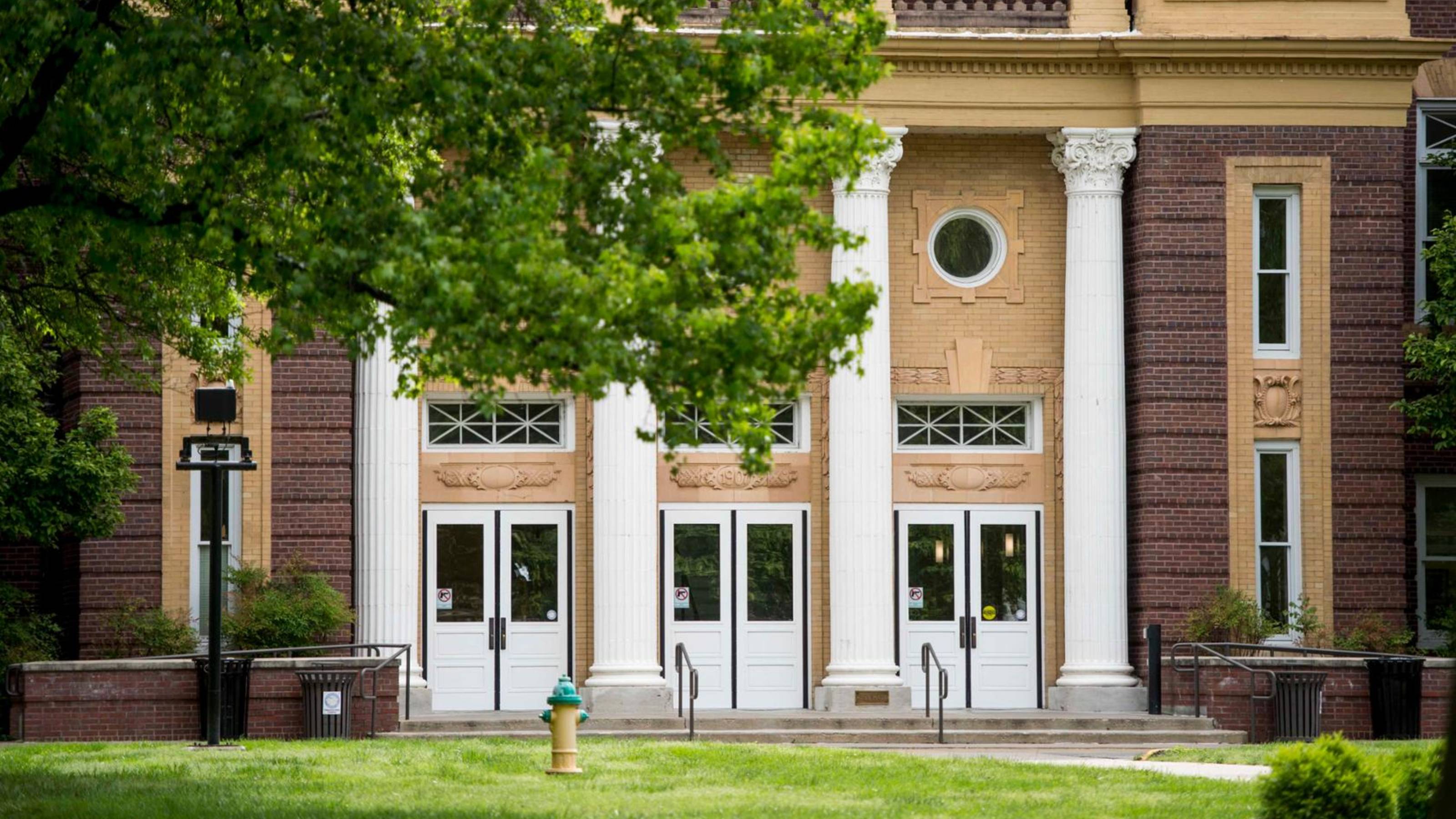
3. Pittsburg, Kansas
- Cost of living: 18.3% below U.S. average
- Population: 20,606
- Median household income: $40,220
- Median home price: $411,000
- Unemployment rate: 5.7%
Pittsburg is about a two-and-a-half-hour drive due south from Kansas City on Route 69. When you get there, you'll find a small town with a cost of living almost 18% below the national average.
Once upon a time, the town was known for its abundance of coal and the Southern and Eastern European immigrants who worked the mines. Today, the area relies more heavily on higher education, thanks to the presence of Pittsburg State University. Famous alumni of Pittsburg's local university include actor Gary Busey and Brian Moorman, a retired two-time Pro Bowl punter for the NFL's Buffalo Bills.
Other major employers include transportation company Watco and Via Christi Hospital medical center.
As for leisure activities, tiny Pittsburg doesn't lack for family-friendly things to do. Area highlights include Lakeside Park, the Crawford County Historical Museum and the Pittsburg Aquatic Center.
Although median incomes are well below the national average, average home prices are a whopping $129,508 cheaper. All told, housing costs are 33.3% lower than what the typical American pays. Myriad other items are economical, as well. Health care is 21.3% lower and Miscellaneous goods and services run about 16.3% cheaper in Pittsburg.
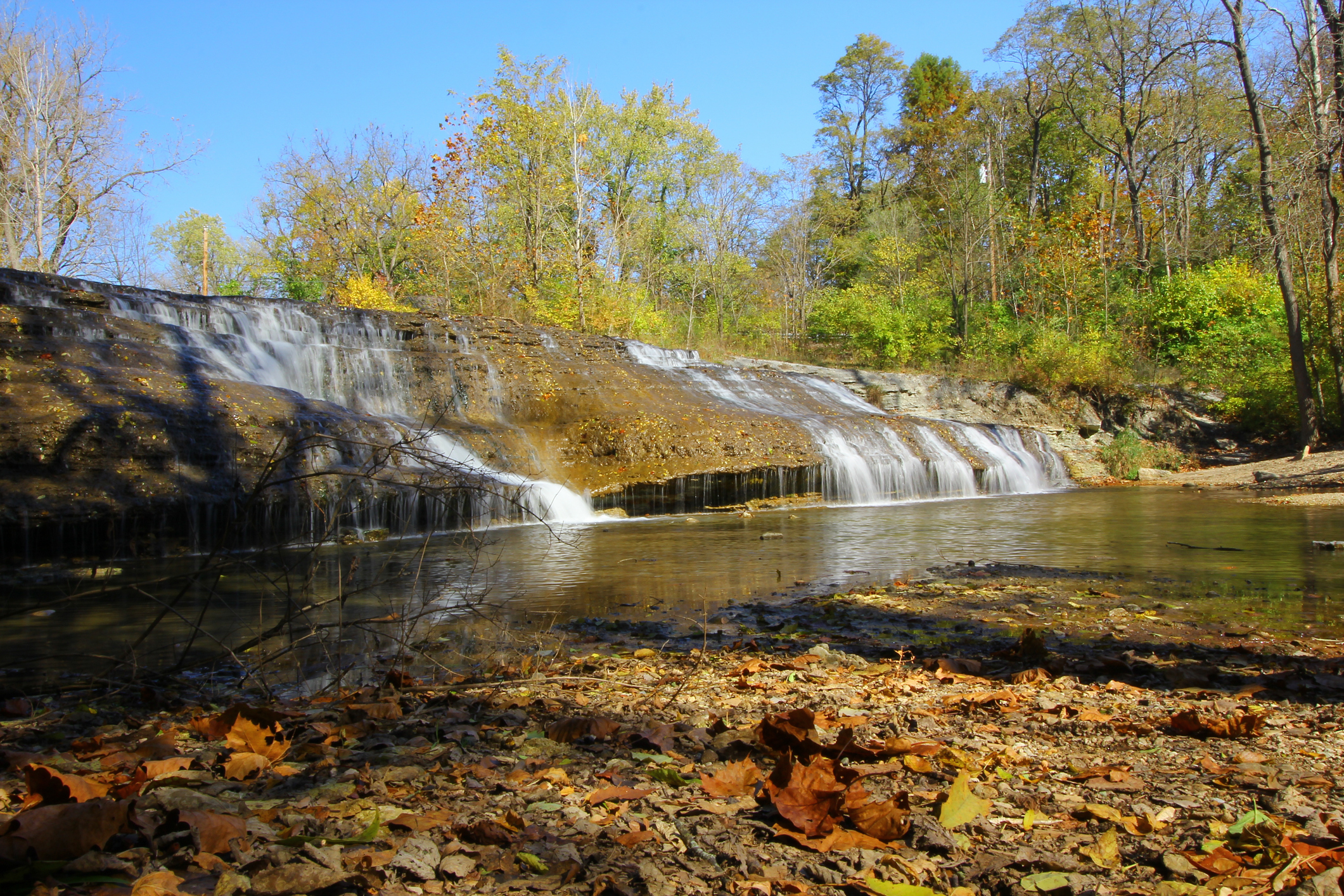
2. Richmond, Indiana
- Cost of living: 19.5% below U.S. average
- Population: 35,551
- Median household income: $46,395
- Median home price: $325,000
- Unemployment rate: 4.4%
Few cities of any size can claim Richmond's place in the early history of recorded jazz. Some of the first jazz records were made in this small town, featuring greats such as Hoagy Carmichael, Duke Ellington and Louis Armstrong. There's a Walk of Fame celebrating jazz and other artists who recorded with Richmond's Gennett Records.
While jazz will always be part of its history, today's Richmond, which is an hour's drive west from Dayton, Ohio, is known more for its colleges and seminaries. They include Indiana University East, the Earlham School of Religion (part of Quaker-influenced Earlham College), and the Bethany Theological Seminary.
Inexpensive housing is a key to Richmond's place among our nation's cheapest small towns. Residents spend a third less on housing than the average American. Apartment rents are 45.2% lower, at $890, than the national average of $1,624. The average home price of $325,000 is 39.9% less.
Health care is comparatively a bargain, with costs coming in 16% lower than the national average.
Indiana has a flat rate income tax rate of 3.05%, which is applied to 401(k), IRA and pension income. However, Social Security is exempt from income taxes. There are also no estate or inheritance taxes in Indiana.
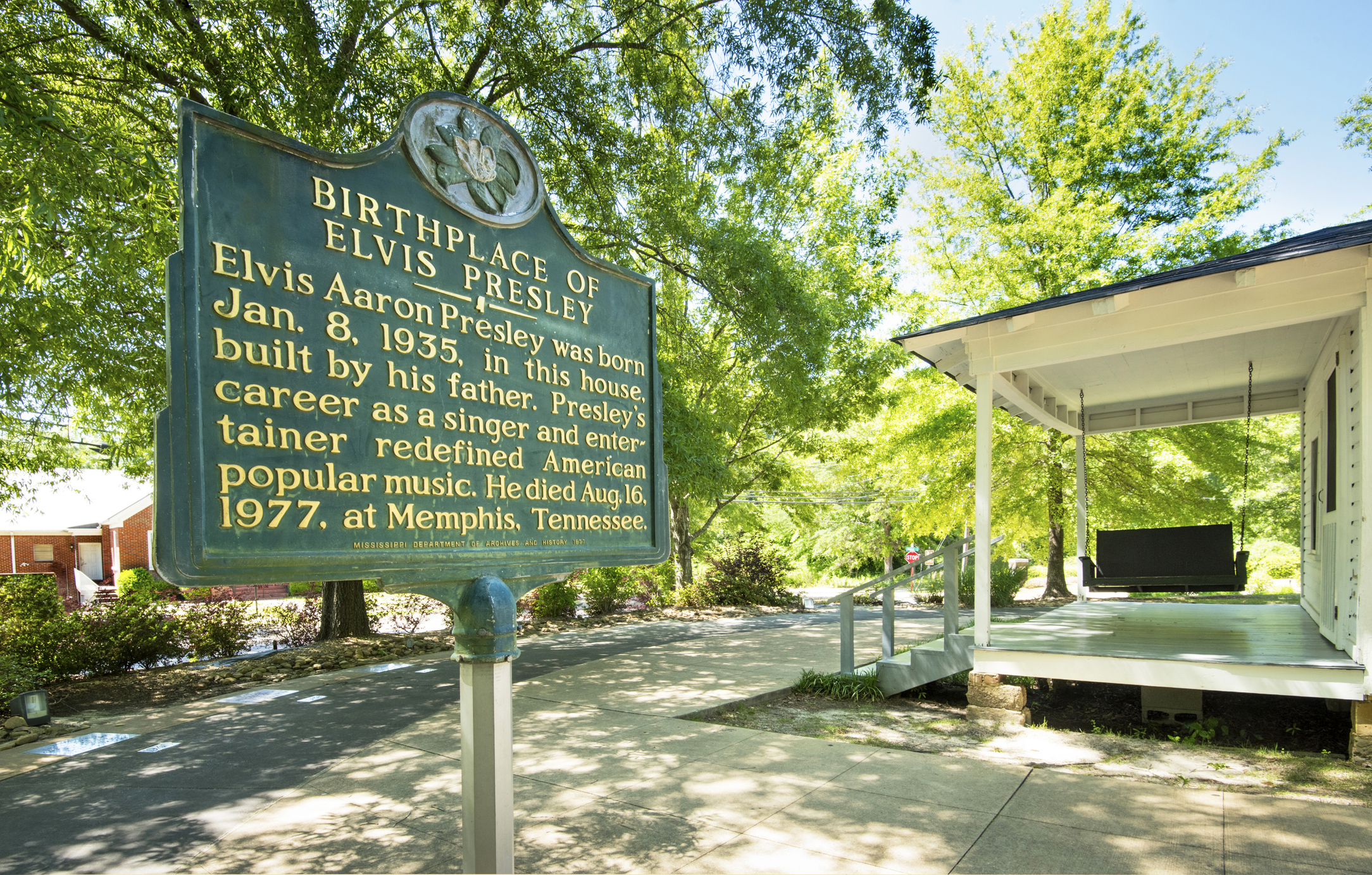
1. Tupelo, Mississippi
- Cost of living: 21.2% below U.S. average
- Population: 37,825
- Median household income: $66,314
- Median home price: $341,500
- Unemployment rate: 3.9%
Tupelo, which sits 110 miles southeast of Memphis's Graceland, is best known as the birthplace of Elvis Presley. Tourists flock to the town's Elvis Presley Birthplace museum and the annual Elvis Festival held in June.
Not a fan of The King? The area's leisure and cultural scene also includes the North Mississippi Symphony Orchestra, Buffalo Park and Zoo, Tombigbee National Forest, the Tupelo National Battlefield, and the Tupelo Automobile Museum, among other attractions.
Tupelo's second-largest claim to fame is arguably its super-low living costs. The comprehensive cost of living comes in at 21.2% below the national average. Housing is almost 39.3% cheaper, groceries go for 5.7% less, and locals save about 12.5% on transportation, 21.7% on health care and 17.3% on utilities.
For residents not making their living as Elvis impersonators, major employers include North Mississippi Health Services and Cooper Tire & Rubber. Additionally, two regional banks — Renasant Bank (RNST) and Cadence Bank (formerly BancorpSouth) (CADE) — are headquartered in Tupelo.
Mississippi has a flat income tax rate of 4.4%. Retirement income is exempt in Mississippi, including Social Security, pensions and IRA and 401(k) distributions. Last, but not least, Mississippi does not have an estate or inheritance tax.
Related content
Profit and prosper with the best of Kiplinger's advice on investing, taxes, retirement, personal finance and much more. Delivered daily. Enter your email in the box and click Sign Me Up.

Dan Burrows is Kiplinger's senior investing writer, having joined the publication full time in 2016.
A long-time financial journalist, Dan is a veteran of MarketWatch, CBS MoneyWatch, SmartMoney, InvestorPlace, DailyFinance and other tier 1 national publications. He has written for The Wall Street Journal, Bloomberg and Consumer Reports and his stories have appeared in the New York Daily News, the San Jose Mercury News and Investor's Business Daily, among many other outlets. As a senior writer at AOL's DailyFinance, Dan reported market news from the floor of the New York Stock Exchange.
Once upon a time – before his days as a financial reporter and assistant financial editor at legendary fashion trade paper Women's Wear Daily – Dan worked for Spy magazine, scribbled away at Time Inc. and contributed to Maxim magazine back when lad mags were a thing. He's also written for Esquire magazine's Dubious Achievements Awards.
In his current role at Kiplinger, Dan writes about markets and macroeconomics.
Dan holds a bachelor's degree from Oberlin College and a master's degree from Columbia University.
Disclosure: Dan does not trade individual stocks or securities. He is eternally long the U.S equity market, primarily through tax-advantaged accounts.
- Charlotte GorboldKiplinger Contributor
-
 Nasdaq Sinks 418 Points as Tech Chills: Stock Market Today
Nasdaq Sinks 418 Points as Tech Chills: Stock Market TodayInvestors, traders and speculators are growing cooler to the AI revolution as winter approaches.
-
 23 Last-Minute Gifts That Still Arrive Before Christmas
23 Last-Minute Gifts That Still Arrive Before ChristmasScrambling to cross those last few names off your list? Here are 23 last-minute gifts that you can still get in time for Christmas.
-
 The Rule of Compounding: Why Time Is an Investor's Best Friend
The Rule of Compounding: Why Time Is an Investor's Best FriendDescribed as both a "miracle" and a "wonder," compound interest is simply a function of time.
-
 The 7-Month Deadline That Determines Your Lifetime Medicare Premiums
The 7-Month Deadline That Determines Your Lifetime Medicare PremiumsUnderstanding Medicare enrollment is crucial, as missing deadlines can lead to permanent late enrollment penalties and gaps in coverage.
-
 If You're a U.S. Retiree Living in Portugal, Your Tax Plan Needs a Post-NHR Strategy ASAP
If You're a U.S. Retiree Living in Portugal, Your Tax Plan Needs a Post-NHR Strategy ASAPWhen your 10-year Non-Habitual Resident tax break ends, you could see your tax rate soar. Take steps to plan for this change well before the NHR window closes.
-
 Could Target-Date Funds With Built-In Income Guarantees Be the Next Evolution in Retirement Planning?
Could Target-Date Funds With Built-In Income Guarantees Be the Next Evolution in Retirement Planning?With target-date funds falling short on income certainty, retirement plans should integrate guaranteed income solutions. Here is what participants can do.
-
 7 Ways to Plan Now to Save on Medicare IRMAA Surcharges Later
7 Ways to Plan Now to Save on Medicare IRMAA Surcharges LaterUnderstand the critical two-year lookback period and why aggressive planning before you enroll in Medicare is the most effective way to minimize IRMAA.
-
 How Much Income You Really Need to Afford a $500,000 Home
How Much Income You Really Need to Afford a $500,000 HomeAs home prices increase, the income needed for a house is also climbing. We break down what you need to earn to afford a $500,000 home.
-
 The 'Best of Both Worlds' Rule of Retirement Spending
The 'Best of Both Worlds' Rule of Retirement SpendingIt's the 4% rule on steroids. Here's what it is and why it may work for you.
-
 Don't Let the Court Decide: Test Your Knowledge on Avoiding Probate
Don't Let the Court Decide: Test Your Knowledge on Avoiding ProbateQuiz Test your basic understanding of why having a estate plan is crucial to avoiding probate in our quick quiz.
-
 Your Year-End Tax and Estate Planning Review Just Got Urgent
Your Year-End Tax and Estate Planning Review Just Got UrgentChanging tax rules and falling interest rates mean financial planning is more important than ever as 2025 ends. There's still time to make these five key moves.

